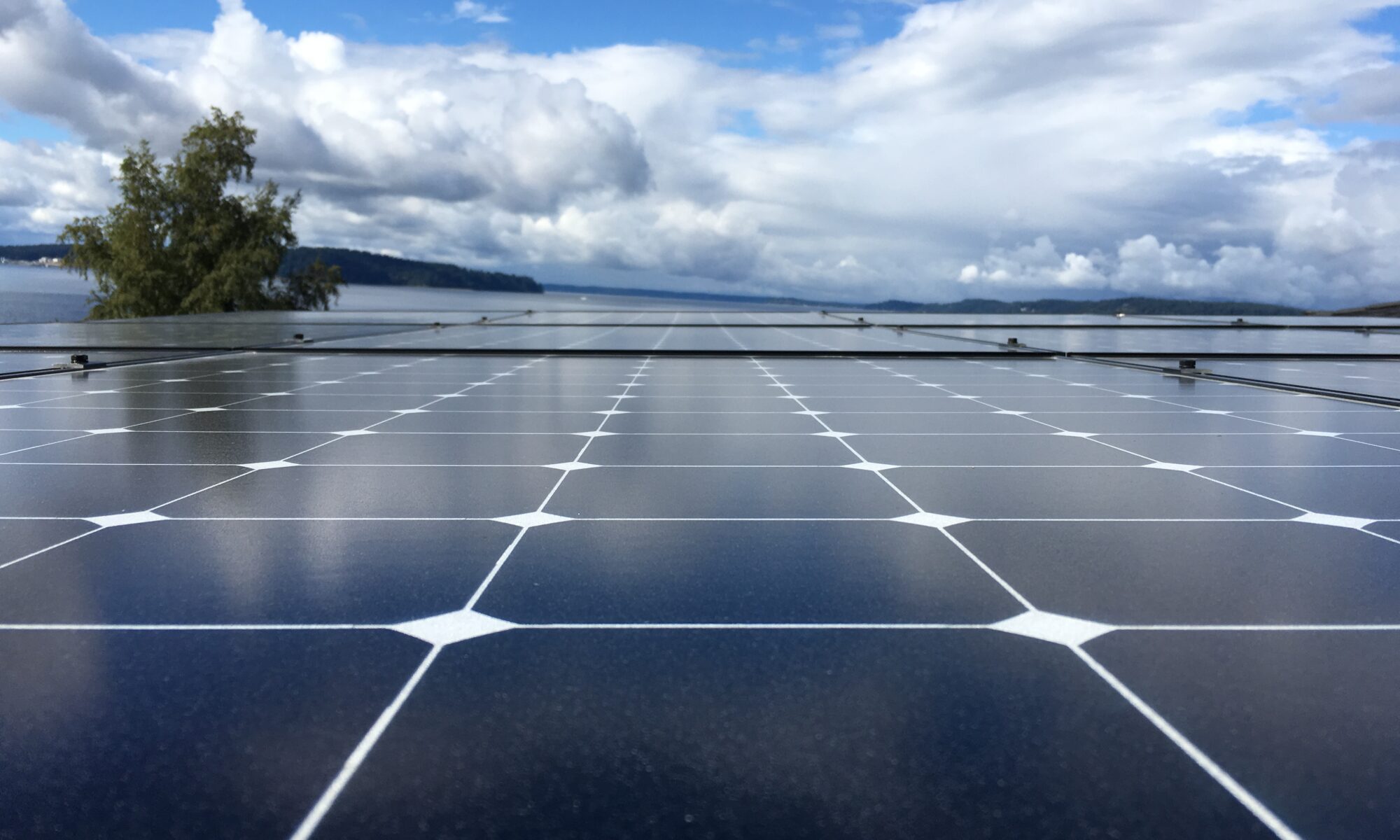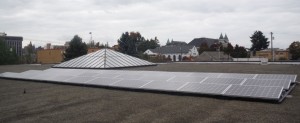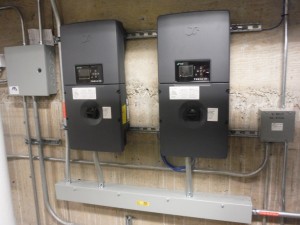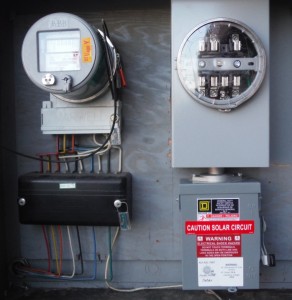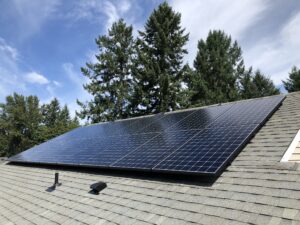
Washington State has a goal for 100% renewable by 2045. This and a growing interest in sustainable living is creating a rise in solar installations. Whether it be solar on your home, business or an open community space, all solar is vital for reaching our state’s sustainability goals. In the spirit of “It takes a community”, recently South Sound Solar teamed up with Olympia Community Solar (OCS) and Kristen Maring with the Tumwater FRESH program at Tumwater High School to go solar. We would like to take this opportunity to highlight everyone’s involvement with this project and offer it as an example of how we as a community can reach our goals!
Kristen Maring teaches a food and farming program for the students of Tumwater School District. In June of 2019, she received a small grant to place solar panels on the Tumwater High School’s greenhouses. Once she had funding, she reached out to OCS.
OCS is a local non-profit helping to bring community solar projects and policy to Washington State. The grant wasn’t enough to fund a traditional solar array, so OCS had to get creative to make the installation a reality- and avoid forfeiting the grant funding. OCS leveraged their connections in Olympia to turn the grant into a fully functional solar array. Rich Phillips, formerly owner of Pure Solar, a Tumwater-based solar panel manufacturer happened to have some spare panels in a warehouse. After some discussion, OCS was able to secure Phillips’ donation of four panels to the FRESH project.
With funding secured and Olympia Community Solar coordinating the donation of panels for the project, they reached out to Kirk Haffner of South Sound Solar – a local installer with over 10 years of experience installing solar, and a commitment to giving back to the community. Kirk stepped in to consult on how to proceed with the installation. With the donated panels, the grant was enough to cover the balance of materials, and South Sound Solar agreed to take the lead on the project and donate their labor to complete the install and get the system up and fully operational. The solar is now offsetting the electricity for the FRESH Program, with many of the greenhouses’ fans running on sustainable solar energy!
OCS raised nearly $800 for the development of professional, permanent signage for the array, and expects to install this final component of the FRESH project in the early part of 2020. With contributions by solar professionals and educators, the sign will be the first in a series of solar education displays around Thurston County donated by Olympia Community Solar.


